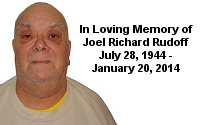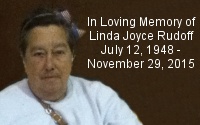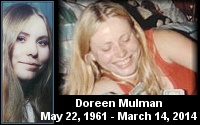| Ghostbusters Books - Making Ghostbusters Trivia & Image Captions » |
by David Hutchison
(Starlog, October 1984, issue #87)
(transcribed by Mark Brown)
Terror dogs, onionheads, marshmallow men and ghostly little old lady librarians are all in a spirited night's work for Richard Edlund and the spookmasters of Entertainment Effects Group.
For the past seven or eight years, Richard Edlund's name has been linked with George Lucas' effects facility, Industrial Light and Magic. During this time, Edlund garnered great attention for his work on the Lucas Star Wars saga, Raiders of the Lost Ark and Poltergeist. For Edlund, the completion of Jedi marked the end of an era. Though pleased and proud to have been able to finish the trilogy, Edlund was anxious to return to Los Angeles.
Conveniently, Douglas Trumbull and Richard Yuricich approached Edlund, asking him to become a partner, exclusive manager and Visual Effects director of Entertainment Effects Group (EEG), which had produced effects for such films as Close Encounters, Star Trek- TMP, Blade Runner and Brainstorm. Edlund agreed to step in and invited a number of top-notch artists and technologists to join him at EEG in Los Angeles.
Two effects projects surfaced within days of each other: Columbia's Ghostbusters and MGM/UA's 2010. After some tricky negotiating, a deal was struck to allow both films-from different studios-to share personnel and equipment for a time. Edlund's new company, housed within the structure of EEG, became Boss Film Co.
Immediately, the various shops and departments of EEG/BFC had to be equipped and staffed for production. The dozen or so artists and technicians who moved from Marin County to Los Angeles had less than three months to get the shop up and running. Once the deal for Ghostbusters was signed, there were only 10 months remaining before the film was due in theaters. In those months, nearly 200 effects shots were completed.
Among those joining Edlund at EEG were art director John Bruno, equipment engineers Gene Whiteman and Mike Bolles, electronics designer Jerry Jeffress and Kris Brown, effects animators Garry Waller and Terry Windell, cameraman Bill Neil, optical supervisor Mark Vargo, matte cameraman Neil Krepela, effects editor Conrad Buff and his wife, Laura Buff, who has become the studio's business manager, effects foreman Thaine Morris, special projects supervisor Gary Platekand Stuart Ziff who headed up the "Ghost" shop.
In a matter of weeks, Waller and Windell set up and staffed a large effects animation facility while the 65mm Oxberry animation stand was computerized. A new 65mm to 35mm anamorphic optical printer was built. Trumbull's unique motion-control graphics camera, the Compsy (Computerized Multiplane Systems), was reworked to handle both 65mm and 35mm anamorphic cameras in rear-screen matte camera work. A unique 65mm mirror reflex high-speed camera designed to operate at up to 120 frames-per-second was constructed. And there were dozens of other improvements and modifications to existing equipment.
Thaine Morris designed and built a special blue-screen system that can be dimmed, allowing the subject to be lit the way the cameraman prefers and then bringing the blue-screen brightness to the proper level with the dimmer control. Most other situations involve a pre-set blue-screen level so that the model must be lit to match the blue screen illumination.
The haunting look of the ghosts in Poltergeist became the springboard for effects in Ghostbusters.
"I think the ghosts in Poltergeist are now accepted as sort of 'generic' for what ghosts look like," Edlund begins. "Many ideas that came up as we were working on Poltergeist, but didn't have time to implement, are now being used on this picture.
"Of course, we didn't want Ghostbusters to look like Poltergeist, and while there are similarities, the look is quite different. Poltergeist was a relatively serious film-a drama-this film is a comedy. So, for Ghostbusters, we have been able to take some liberties and get away with some pretty outrageous concepts.
"The first ghost is the old librarian, which involves a terrifying transformation. Then, there is the green Onionhead, who is a pretty lovable character. He is a glutton, constantly rummaging in the hotel's food carts. He eats and eats, but is never satiated because the food goes straight through him and falls onto the floor. [See the Steve Johnson interview in FANGORIA #40 for details on the creation of Onionhead and the librarian ghost.] And then there is the towering Stay Puft Marshmallow Man stomping through the streets of New York. There are other ghosts seen here and there, and there's the big geyser of ghosts who are seen escaping from the Ghostbusters' holding pen. This last item is a pretty grand shot in which you see dozens of ghosts returning to their New York haunts.
"The most fearsome creatures are what is referred to in the script as Terror Dogs. Creating these beasts was a grand group effort, combining the artistry of both full-size and miniature puppets - Dan Aykroyd wrote the original script and created the basic concept. The script was then polished by Harold Ramis and Ivan Reitman, retaining the idea of 'dogs' which metamorphosed from humans.
"Randy Cook took the rough design and re-thought it in terms of what it must -do in the picture and what could be done with special effects. The full-size creature, built in Stuart Ziff's creature shop, is about four or five feet tall and seven or eight feet long. It was controlled by about 12 guys with wires, poles and various mechanical mechanisms on the set."
Foam latex stop-motion models were constructed for the action sequences in which the creatures leap and run. The miniatures were shot with traditional stop-motion techniques with a little computer assist to blur some of the rapid jumps and leaps required by the storyboarded action.
"The creatures are really more like reptilian gargoyles than dogs, " confesses stop- motion animator Randy Cook. "Some of the original sketches are very similar to the Krell monster from Forbidden Planet, a bit of that look has been retained. From some angles, people say it looks like King Kong, an iguana, or like Tytla's prince of darkness in Fantasia... and from some angles, it even looks like me." [For a comprehensive interview with Randy Cook on Ghostbusters, see FANGORIA #39.]
It was the first time that stop-motion cameraman James Aupperle had worked in 55mm. Aupperle, whose credits include stopmotion effects for TV's Jason of Star Command and, most recently, Dreamscape, found that "working in 65mm is not much Different than working in 35mm-except that the 65mm camera is easier to load," Aupperle chuckles. "And, of course, there's the obvious result that everything is sharper and the image quality much better."
"Almost all of the effects for Ghostbusters were shot on 65mm negative and reduced to 35mm anamorphic as they were composted on the new printer," explains "The 65mm negative is almost twice as large as the VistaVision format that we used at ILM. VistaVision just barely makes it in terms of image quality for effects, and for certain types of effects scenes, it doesn't come up to the live-action material at all. The 65mm format always makes it, though, and sometimes we actually have to degrade the effects shot to match the live action."
Stormy Weather FX
Prominent in the Ghostbusters FX sequences are the stormy clouds seen above Sigourney Weaver's Central Park West apartment building and the more ethereal clouds surrounding and within the Gozer Temple on the building's roof. To create these effects, Bill Neil supervised the construction of a new cloud tank for Gary Platek. Coincidentally, it was EEG which first developed the technique of cloud tank skies in Close Encounters. But that cloud tank found its way up to ILM, so a new 1500-gallon tank with specially designed multiple control valves was constructed at EEG/BFC.
Platek, who also created a number of interesting cloud and laser effects in both Raiders of the Lost Ark and Poltergeist, brought his laser experience to bear on the top of Gozer's temple. But perhaps Platek's most interesting use of lasers and clouds involve the Onionhead ghost as he's pursued through the hotel hallways by the crusading Ghostbusters. At one point, Onionhead crashes into a wall and dissipates into a ring of mist.
"It's basically an effect that I took a sheet of glass over which I projected a sheet of laser light," explains Platek. "I just dumped a beaker of dry ice fog onto the glass. When the mass of fog hits the glass, it radiates outward and dissipates in a very ghostly fashion." Optical supervisor Mark Vargo combined Platek's laser fog element with a shot of the wall to create Onionhead's ghostly splat. Platek's latest project is to create Jupiter's whirling vortexes of color for 2010.
The Nutrona Wands
In addition to the usual chore of rotoscoping articulated mattes, animation super visors Garry Waller and Terry Windell, were responsible for creating thousands of frames of animation effects. The most spectacular is the Nutrona Wand effect.
"What we had to create," says Windell, "was basically a 'rubberized' laser with a secondary source of energy. There had to be a stream of power shooting out of the gun and a counter action-something pulling back into the gun." There are also tiny, dancing particles of energy, light flares and pyrotechnic effects.
Although most of the effect is created with multiple levels of bottom lit mattes photographed on the Oxberry, Waller also incorporated two passes of "live light" effects. This combination of artwork and photographed light FX blends the entire effect into the live action much more believably than artwork alone could do.
This interesting combination of artwork and light effects is a natural product of the duo's association. "We are both animators," explains Windell, "but I lean more towards the drafting or illustration end, while Garry is more heavily involved with the photographic end. As a result, we combine all the methods of image graphics and classical animation, rarely using either in its pure form.
"We both worked on Poltergeist, but it wasn't until Jedi that we really began to work together. We noticed each other taking a different approach to the same problems, so we started conversing and working together adding helpful hints. Previously, I had very little camera experience-none.
"While I would shy away from extreme animation," Waller puts in, "because I lacked the experience."
"So, we started teaming up on shots or designs," continues Windell. "The association began to grow and it started showing up in the screening room. Our shots were different, a little broader."
"They had a bold look and the response was very positive," agrees Waller. "So, Richard invited us both to come down here to start the animation crew and we naturally jumped at the chance," Windell concludes. Over the course of production, Waller and Windell assembled a team of animators including Sean Newton, William Recinos, Bruce Woodside and Richard Coleman.
But there is also the unseen technical side of the animation department which largely consists of rotoscoping articulated mattes. For example, in one sequence, lightning bolts from the demon god Gozer's fingers nearly sweep the Ghostbusters off the roof of "Spook Central." As they cling to the stone blocks at the roof's edge, their feet kick into empty space while the camera looks down the side of the apartment building. Actually, the actors' feet are thrashing over a matte painting; the mattes had to be traced frame by frame so the Ghostbusters' heels could be seen over the matte painting.
The technical animators also produced rotoscoped mattes which allowed the Stay Puft Marshmallow Man to appear in Columbus Circle. Animators drew individual people and vehicles on the street as they moved in front of the Stay Puft Man.
Another rotoscope matte situation involved both the Librarian and Onionhead. Both ghosts are seen handling physical objects on the set, but while the ghosts must appear semi-transparent, the objects should be solid and real. The Librarian, for example, is seen turning the pages of a book. The book appears solid in her hands, but she's a diaphanous figure floating in space. It was the job of the animation department to hand rotoscope the book, allowing the optical department's Mark Vargo to print the scene with the book appearing solid and the Librarian seeming ghostly.
Onionhead has a great deal of business which involves rotoscoping props, since he is nearly always eating something. All of the plates and food must be solid and real, while Onionhead shows up quite transparent. The situation became most complicated when Onionhead upturns a bottle of wine and guzzles the contents. The bottle had to be rotoscoped and the liquid animated frame by frame, so that it would appear to fall through him and onto the table cloth below, William Recinos animated that effect. A wet stain was created on set by pumping liquid from beneath the table.
Technical animators Annick Therrein and Peggy Regan did all the rotoscope work for those very difficult shots. Working with them were Sam Recinos, Pete Langton, Les Bernstein and Wendie Fischer, handling all those chores and much more. There were also four assistants: Eusebio Torres, Mac Torres, Ko Hashiguchi and Margaret Craig Chang.
"We had some really talented Class-A animators," continues Windell, "who didn't really have much FX experience. The hard part was conditioning them to animate naturalistically rather than artistically. This was particularly true of the electrical effects. It's very easy to exaggerate the timing in animation. We needed to tone that down to something more realistic."
"For the electrical effects," Waller adds, we had a Tesla coil to generate lightning effects in order to show the animators how electricity moved. But once they had a point of reference, everything fell into place.
"It was difficult not to be comedic with the animation effects. In the beginning, a couple of the animators drew some ecto plasm. Your first impulse is to create comedic swells in the movement. We had to be careful to let the actors be funny and not add those two beats of anticipation before the movement as you would in cartoon animation. Everything had to be thought out in a subdued, naturalistic sense."
"Lightning, in particular is very easy to over animate," affirms Windell (who animated the Emperor's lightning effects at the climax of Jedi), "because you rarely see it in reality. Many people will draw this jazzy, shakey, zigzag, convulsive sort of movement. It really doesn't do that, it follows through on a path and in a snap, it's gone. All of the animation effects, incidentally, are done on 'ones'-that is one drawing per frame of film as opposed to one drawing per two frames of film (or 'twos'), and so on."
Garry Waller was also responsible for a few shots of motion-control animation with a three-inch miniature of Onionhead. There are some shots in which the ghostly glutton has to spin and tumble, doing acrobatics through the air, bits filmed with the miniature Onionhead, lit dimensionally and shot on the animation stand. Bob Spurlock built a special gimbal for the miniature and Garry removed the glass out of the Oxberry for the shot. The Oxberry was turned into a miniaturized version of the main stage tracking camera for these special Onionhead moves.
A more spectacular shot is the aerial view of the Ghostbusters' firehouse when the geyser of ghosts is seen streaming upwards, escaping from the basement holding pen. Garry Waller created a series of animated streaks on the Oxberry, using a bottom-lit dot and programming the camera and art work to make the necessary streaks.
"Terry did the original art layouts," explains Waller, "and then once the Oxberry was programmed, we just let it run. We used positive and negative moire patterns to break up the streaks of light, creating a more interesting stringy look. It was very time consuming. One streak took anywhere from nine to 14 hours to shoot. So, we had two weeks of solid 14-hour days on the Oxberry, creating that one shot."
Melting Marshmallow Man
Mechanical effects supervisor Thaine Morris called in pyrotechnician Joe Viskocil, who had lent his expertise to Star Wars, to create a Stay Puft suit which could be set aflame with a stuntman safely inside. The suit was constructed of layers of foam. The outer layer was flammable Scott foam, while the inner layer consisted of a special foam, pyrothane, which stopped the flames. Additionally, the stuntman wore a fire-resistant Nomex suit, helmet and goggles, and was on supplied air. Still, it was quite claustrophobic. He could only see out through his marshmallow mouth and all he could see was flames.
Linda Frobos sculpted the head which was operated by cable controls. The articulation mechanics were created by chief mechanism designer Steve Dunham and machinist Tom Cuinan.
Richard Edlund and his crew at EEG/ BFC have turned their full attention to 2010, which will premiere December 7. In a sense, 2010 is coming home, returning to its roots. More than 15 years go, a very young Doug Trumbull joined Wally Veevers, Con Pederson and Tom Howard to create and supervise the special effects for 2001, filmed entirely in 65 mm. And although Trumbull is not involved with 2010, the special effects are being shot in 65mm by artists who grew up in the monumental shadow of 2001. They are as excited by the challenge as Doug Trumbull and his co-workers once were. The odyssey continues.
Search (Reference Library Only)
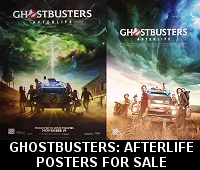

(Ghostbusters Amazon Store)

Please be aware that as an Amazon Associate, I earn a very tiny commission from purchases made though the Amazon links on this site.


|
COMMUNITY LINKS
NEWS • Ghostbusters Wiki • GB News • GB Fans • Ghostbusters Mania • GB Reboot Facebook • Proton Charging News Archive FORUMS • GB Fans • EctoZone OFFICIAL • Ghost Corps Facebook • Ghostbusters Facebook • Ghostbusters YouTube • Ghostbusters.com |

( MY COMPARISON REVIEW )
( AVOID SHIPPINGEASY/STAMPS.COM )
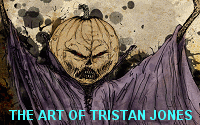
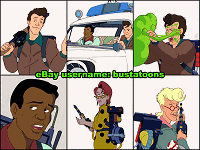
U.S. eBay (Ghostbusters stuff)
U.K. eBay (Ghostbusters stuff)
